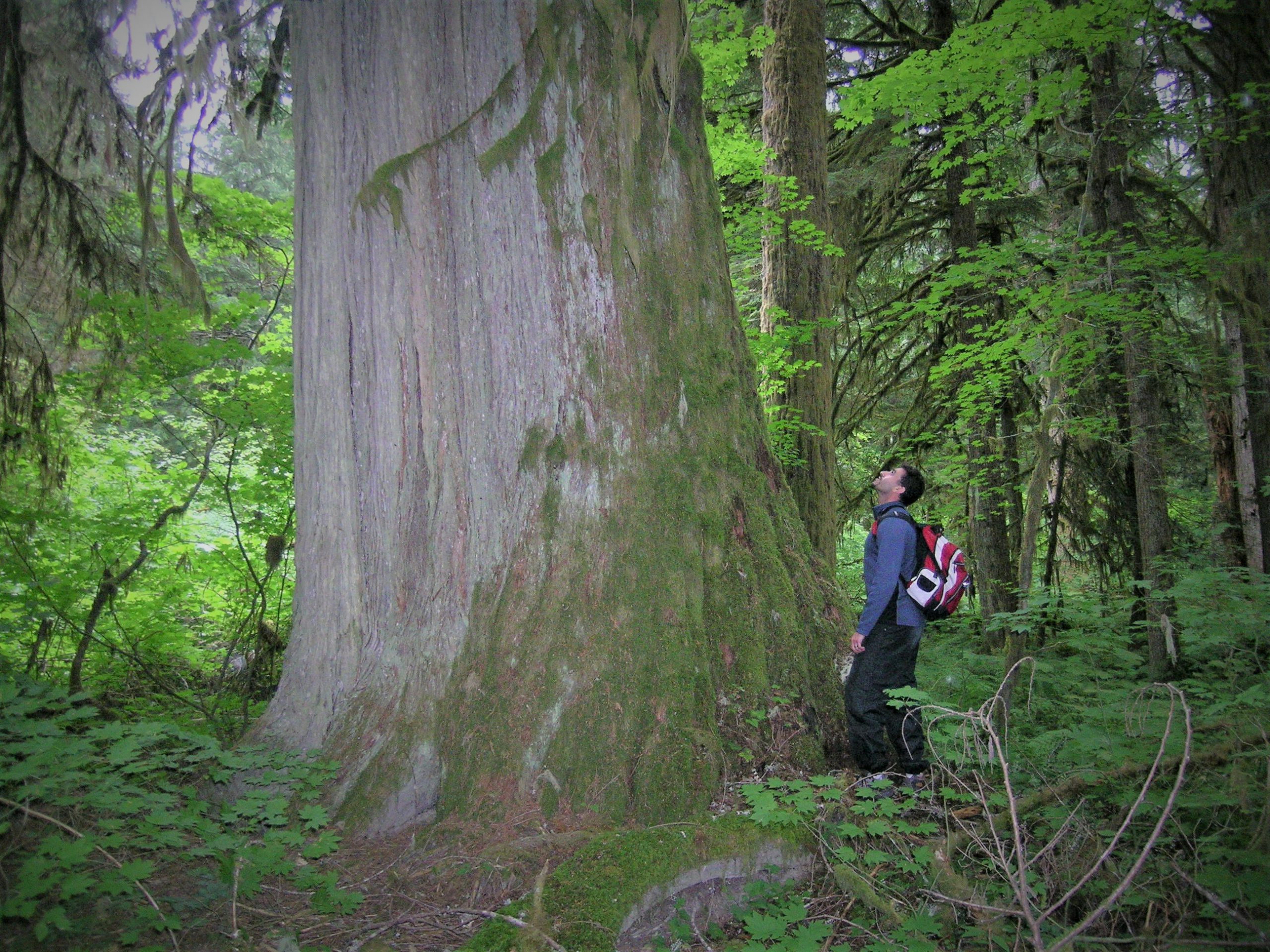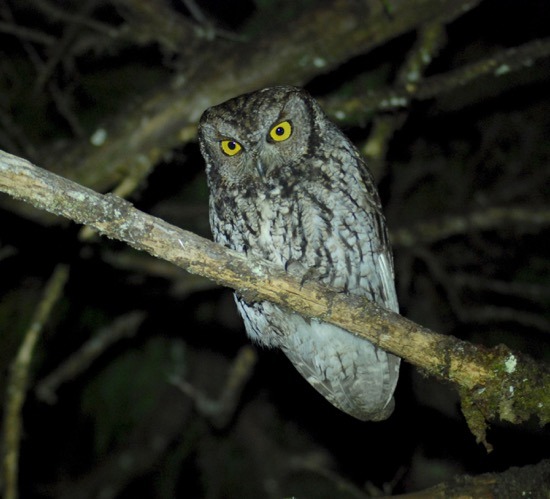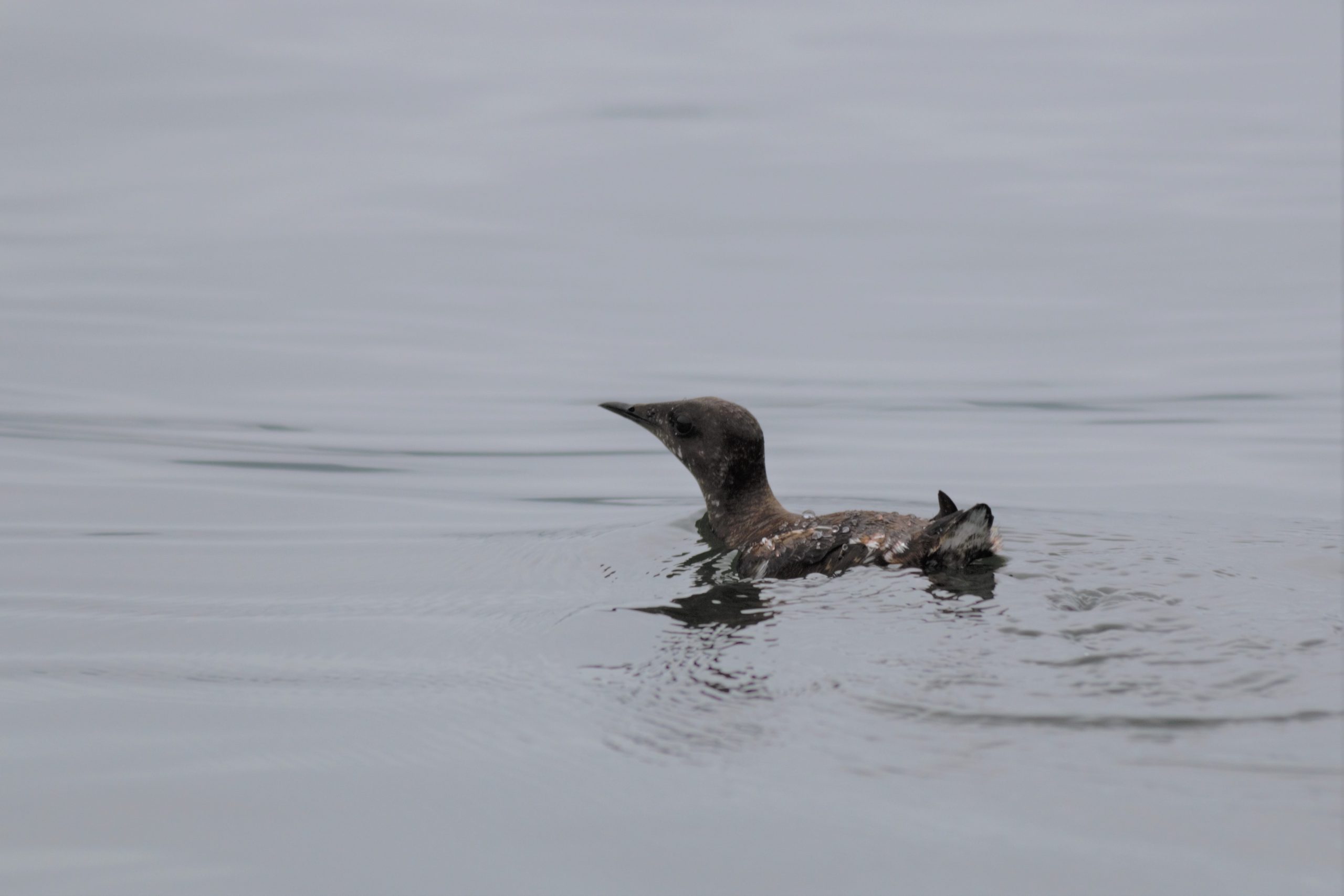By Yousif Attia and James Casey, Birds Canada
For many Canadians, the image of coastal British Columbia is that of iconic temperate rainforests with towering cedars, Douglas firs, and hemlocks. The reality however, is that these forests are highly sought after in the logging industry and now only an estimated 3% of high productivity old growth remains on the coast. The logging of old growth forests along coastal British Columbia has long been a contentious issue, and recently, has led to protests at Fairy Creek, on southern Vancouver Island. The province of BC has promised more consultations on reducing harvest levels, but with so little high productivity old growth forest remaining, an immediate pause on logging in these areas is required while long term solutions are explored.

Old growth tree Photo: Yousif Attia
Old growth ecosystems are important for many animals including several birds considered species at risk. The globally endangered Marbled Murrelet is a small seabird that nests on the moss laden branches of giant conifers. Similarly, the coastal subspecies of Northern Goshawk prefer to nest in large trees and are sensitive to human disturbance. Other examples of species at risk that use old growth include Band-tailed Pigeon and Olive-sided Flycatcher.

Western Screech-Owl Photo: Jeremiah Kennedy
The unique coastal subspecies of Western Screech-Owl has declined precipitously in recent years, and is also believed to associate with old growth stands. We have already lost nearly all of the Spotted Owl in Canada, another old growth inhabitant, so these declines are cause for concern. More research on the year-round habitat requirements for this species should be prioritized and subsequently inform targeted conservation efforts.

Marbled Murrelet Photo: Yousif Attia
In addition to species at risk, many other birds, their nests and eggs, are protected under the federal Migratory Birds Convention Act, and rely on old growth ecosystems. Most of these species breed in Canada during the summer months, and then migrate as far south as South America to spend the winter. Migratory birds are shared amongst many countries and we all have a shared responsibility to do our part in maintaining habitats during their entire life cycle.
In light of this, it is recommended that logging of old growth at Fairy Creek and elsewhere in coastal BC is put on hold. Birds Canada, alongside supporters such as the Sierra Club of BC, will advocate for the protection of old growth forests, the ecosystems they sustain and the species that rely on those ecosystems.
Birds Canada’s statement on Old Growth Logging in BC can be viewed here.

